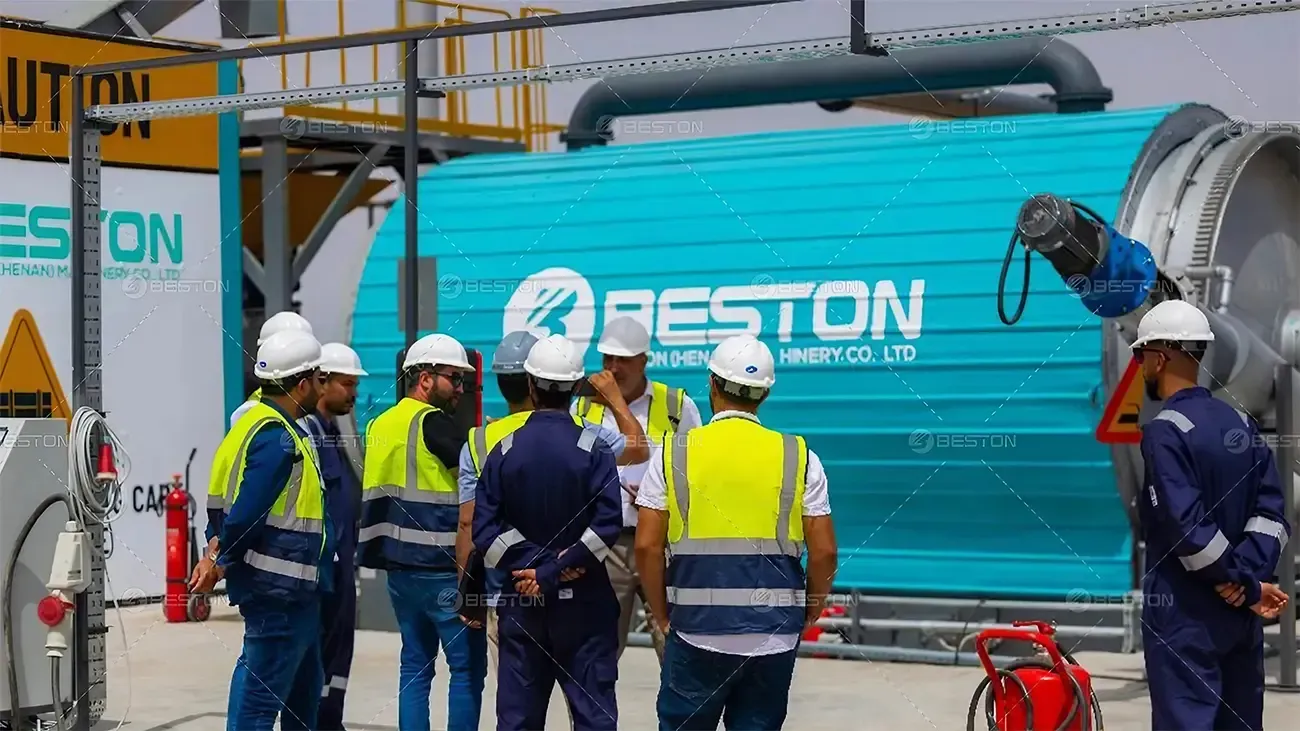Effective Approach for Sustainable Treatment of Oily Sludge: Thermal Desorption
- By Beston Charcoal
- •
- 11 Apr, 2025
- •
The treatment of oily sludge has become a critical challenge for industries involved in oil extraction, petroleum refining, and wastewater treatment. The accumulation of oily sludge presents significant environmental concerns due to its high pollutant content, including heavy metals, hydrocarbons, and toxic compounds. As the demand for sustainable waste management solutions increases, thermal desorption has emerged as one of the most efficient methods for the treatment of oily sludge. This process not only ensures the safe disposal of contaminants but also offers potential for resource recovery.
Thermal Desorption Process Overview
Thermal desorption is a high-temperature treatment technique designed to remove contaminants from sludge through the application of heat. The process involves heating the oily sludge to a temperature that causes the volatile compounds, including oils and hydrocarbons, to evaporate. These compounds are then condensed and collected, while the remaining solid residue is typically non-toxic and can be safely disposed of or further treated. The thermal desorption unit plays a pivotal role in this process, providing the necessary environment for thermal volatilization and separation of contaminants.
The key advantage of thermal desorption is its ability to treat a wide range of organic contaminants, making it an ideal method for oily sludge treatment. It allows for the effective removal of complex hydrocarbons and other organic pollutants without requiring extensive chemical additives or reagents.

Types of Thermal Desorption Unit
There are several types of thermal desorption units, each designed to cater to specific waste treatment needs. Two primary forms of oil sludge treatment plant are commonly used in the industry:
-
Direct Thermal Desorption: In this method, the oily sludge is heated directly by means of a flame or hot gas. The volatile contaminants are vaporized, and the remaining solid waste is transferred to a cooling unit for further processing or disposal. Direct thermal desorption systems are generally more energy-intensive, but they offer high treatment efficiency for volatile organic compounds (VOCs) and other harmful substances.
-
Indirect Thermal Desorption: This system uses a heat exchanger to indirectly heat the oily sludge. The heat is supplied through a medium such as oil or steam, allowing for more controlled temperature regulation. Indirect desorption units are typically more energy-efficient and have a lower environmental impact compared to direct systems. However, they require more complex equipment and control mechanisms.
Both methods are effective in removing the bulk of hydrocarbons, oils, and other organic pollutants, making them suitable for large-scale industrial applications.
Advantages of Thermal Desorption for Oily Sludge Treatment
High Contaminant Removal Efficiency: One of the most significant advantages of thermal desorption is its high efficacy in removing a wide variety of organic contaminants, including oils, heavy metals, and persistent organic pollutants. By applying heat to the oily sludge, the volatile compounds are separated and captured, leaving behind cleaner, less hazardous materials.
Resource Recovery: In addition to waste treatment, thermal desorption facilitates the recovery of valuable resources. The oils and hydrocarbons extracted during the process can be refined or repurposed, offering economic benefits. For example, recovered oil can be recycled for use as a fuel source or as a feedstock in other industrial processes.
Environmentally Safe Disposal: After the volatile contaminants are removed, the remaining solid residue is typically non-toxic, making it easier to manage. This reduces the environmental impact associated with disposal, as fewer harmful pollutants remain in the waste stream. Thermal desorption also prevents the release of toxic vapors into the atmosphere, which is a significant concern in alternative treatment methods.
Scalability and Flexibility: Thermal desorption units are adaptable to different scales of operation, ranging from small-scale facilities to large industrial plants. The process can be tailored to treat varying volumes of oily sludge, providing flexibility for diverse industries such as petrochemical, oil and gas, and manufacturing sectors.
Key Considerations for Effective Implementation
When implementing thermal desorption for oily sludge treatment, there are several factors to consider:
-
Feedstock Composition: The type and composition of the oily sludge being treated will influence the efficiency of the thermal desorption process. Sludge with a high concentration of easily vaporizable hydrocarbons is typically easier to treat compared to more complex or viscous materials.
-
Temperature Control: Precise control of the temperature within the thermal desorption unit is crucial to ensuring optimal performance. Overheating can lead to excessive energy consumption or the formation of harmful by-products, while insufficient heat may result in incomplete contaminant removal.
-
Regulatory Compliance: Operators must ensure that the thermal desorption process complies with local environmental regulations, particularly concerning air emissions and waste disposal. The use of advanced filtration systems and emission control devices is essential for meeting regulatory standards.
